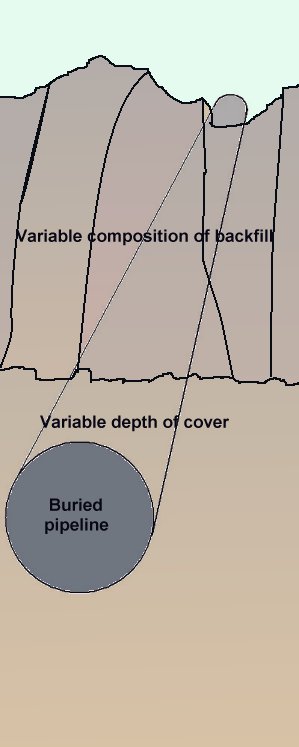
Cathodic Protection Training Course

In these pictures it can be seen that the vase has been placed on a surface that has an undefinable profile as in the drawing the pipeline is at a variable depth of cover.
It can be seen that you can measure the distance from the top of the tube to the water level. In the field it is possible to measure the distance from the ground to the top of the pipeline using electrical techniques that depend on putting an electrical signal in the pipeline.
This does not tell you the electrical potential of the metal at the anode of any corrosion cell that is under the ground.

You can measure the distance from the bottom of the glass flower vase to the water level, but a pipeline might have several corrosion cells on it's surface, each with a different EMF because of the nature of the ground in which it is buried.
You can see that the water is not passing between the upright tubes through the small connecting pipes in this case and the same status would apply to a pipeline if the coating is perfect at the location of the test.
Comparing this vase to a metal-to-electrolyte interface we can see that there are three different potentials but no way that current can pass between them.
No corrosion can take place in this situation.
The water levels are at rest and each interface is in equilibrium.